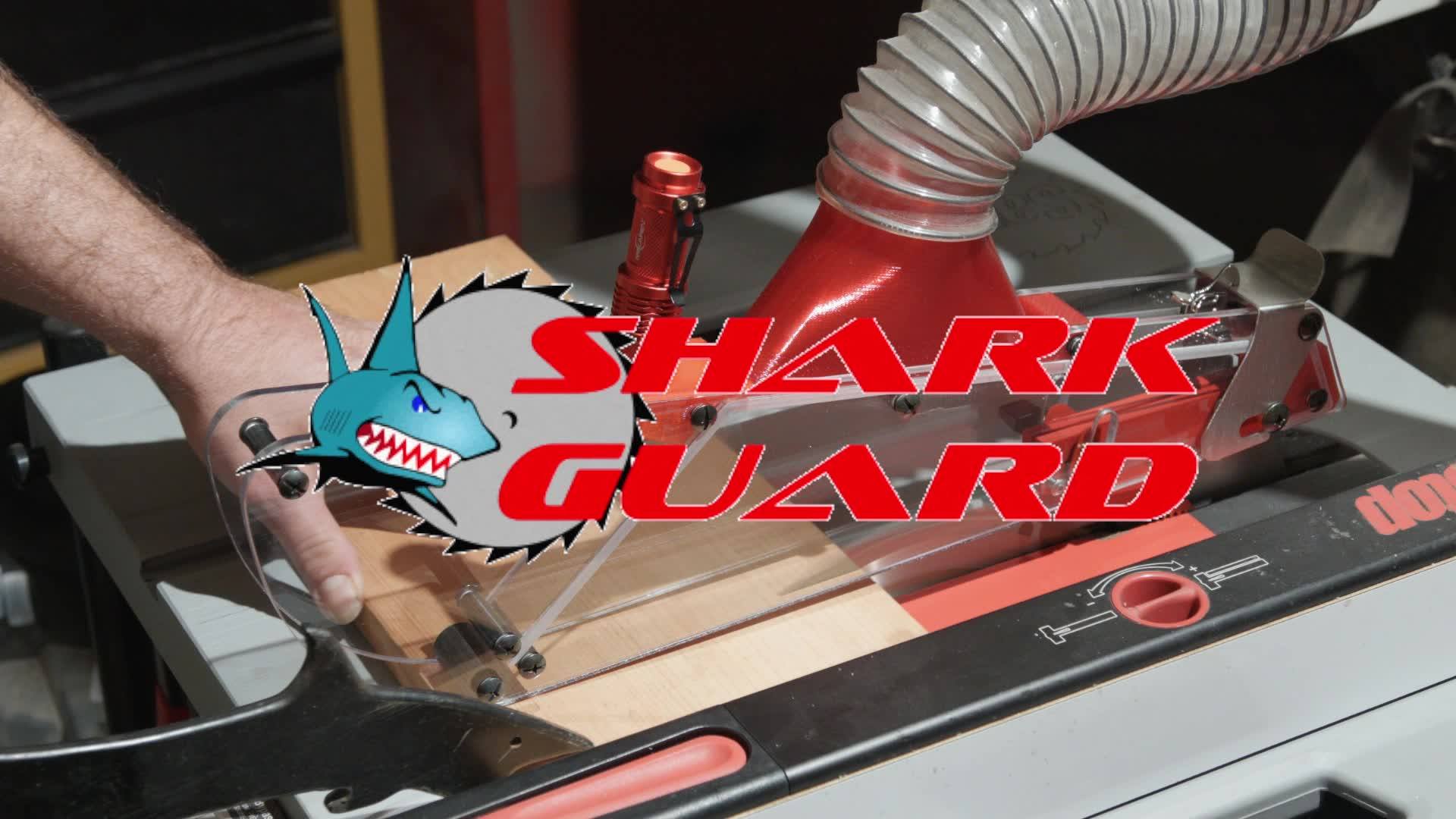
If you were wondering which knife works best for your setup, you will find our typical recommendations here. The thicknesses we offer are standard steel gauges (13, 12, and 11) .090”, .105”, and .120”. The smaller the number, the thicker the stock.
Most older factory supplied guards use 14 gauge and even less in some cases. Until recently, this was typical. Now with newer saw designs coming out that are equipped with riving knives, more and more are shipping with .090 inch thick factory knives. Generally, our material is a bit under our posted thicknesses, but within .003”. This is due to manufacturing the brushed finish on the splitters and riving knives.
We use brushed finish 304 and 316 stainless steel for all splitters and riving knives.
It has been our experience that getting a splitter very close to the blade thickness is not the optimal choice. It can often result in sticking, pinching or otherwise binding during operation (sometimes on nearly every cut). This is a safety hazard — it will cause you to want to apply more pressure to feed wood to the blade.
You may have seen people cut lumber the exact thickness of the kerf and use this as a splitter mounted into the throat plate. The reason that works is because the splitters are so small in area, they don’t have enough surface to cause much friction. The larger area of bigger splitters will cause issues if they are too thick. We only sell a few of the thickest versions. They would be ideal on a saw in a cabinet shop that was dedicated for sheet goods. They also work on saws that have an easily adjusted splitter mounting bracket. Some are easy and some can be a bear.
Our most popular option is .090 inch thickness. We recommend the .090” for anyone using both types of blades (thin kerf and standard kerf). It actually works well for both due to the area of the splitter surface. The most popular option for anyone not using thin kerf blades is the .105″. These are slightly thicker and may bolster support to the guard.
Please check your blades with a caliper or micrometer before ordering. You can also make a stop cut in a piece of material and measure the resulting slot cut by the blade (preferred — may prove more accurate in many cases). In the past few years, some blade manufacturers are pushing the limits with ultra thin kerf blades. We feel that these are too thin to use safely. The best option is not to buy blades thinner than .090″. For table saws 3HP or higher, thin kerf blades tend to be a bit wobbly. We used to sell mainly thin kerf splitters and knives, but as of late, full kerf (1/8”) are becoming the norm again, and with good reason. Choose your blades wisely. If the blade is too thin to use the factory safety equipment, then how wise of a purchase can it really be?
The kerf thicknesses of blades from what we have experienced are as follows:
Thin Kerf — 091”-.098” Optimum splitter thickness we provide. .09”
Standard Kerf — .110”-.118” Optimum splitter thickness we provide. .105”
Full Kerf — always 1/8” or .125” Optimum splitter or riving knife thickness is .120”
Some teeth on blades taper down in thickness to the blade body. If you have this type of blade sharpened, the kerf thickness of the teeth will be narrower. This is why we encourage you to measure the width of the teeth of your blade with a micrometer before placing an order.
We have the ability to make custom fabricated ultra thin splitters and riving knives, but for each different model we sell, there may be issues that will arise when using thinner stock. Email us if you require something thinner (Ex. 8” diameter blades). We will let you know what differences you may see or if it is possible on your saw. We can also custom fabricate riving knives and splitters for use with 8” blades that will sit closer to the blade to help prevent kickbacks.
Some customers use multiple different thickness blades that have a wide range of kerf thicknesses. I must recommend you purchase a splitter or riving knife that corresponds with the kerf thickness of your blade. We can make many different thickness splitters and knives. If you have a custom request, feel free to call or email.
Some customers are comfortable using full kerf blades with thin kerf riving knives and splitters. I do not recommend this. I have had numerous customers contact me and say that there is burning on the wood they cut. This is caused by the new blade they bought that happened to be a full kerf blade and they had a thin kerf splitter or knife installed. This is dangerous to not pay close attention to so please understand the kerf thickness of your blade.
Pay close attention to the alignment of the splitter or knife as well. If you experience binding of wood on the splitter or knife, but know you have ordered the correct thickness, make sure that it is in proper alignment with the blade. Sometimes the trunnion can be slightly out of alignment and will throw the knife off on the back end causing binding of the wood. This is not common, but it happens even with new saws. We’ve pretty much seen it all here. There are many youtube videos on how to align trunnions to the blade.
In summary, a good splitter or riving knife should be just a bit thinner than the thickness of your blade kerf. Safety should be easy and trying to use a splitter that is too thick is a step in the wrong direction.